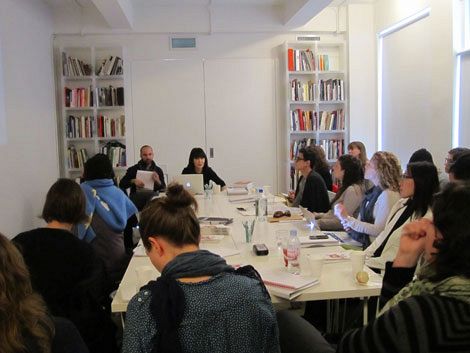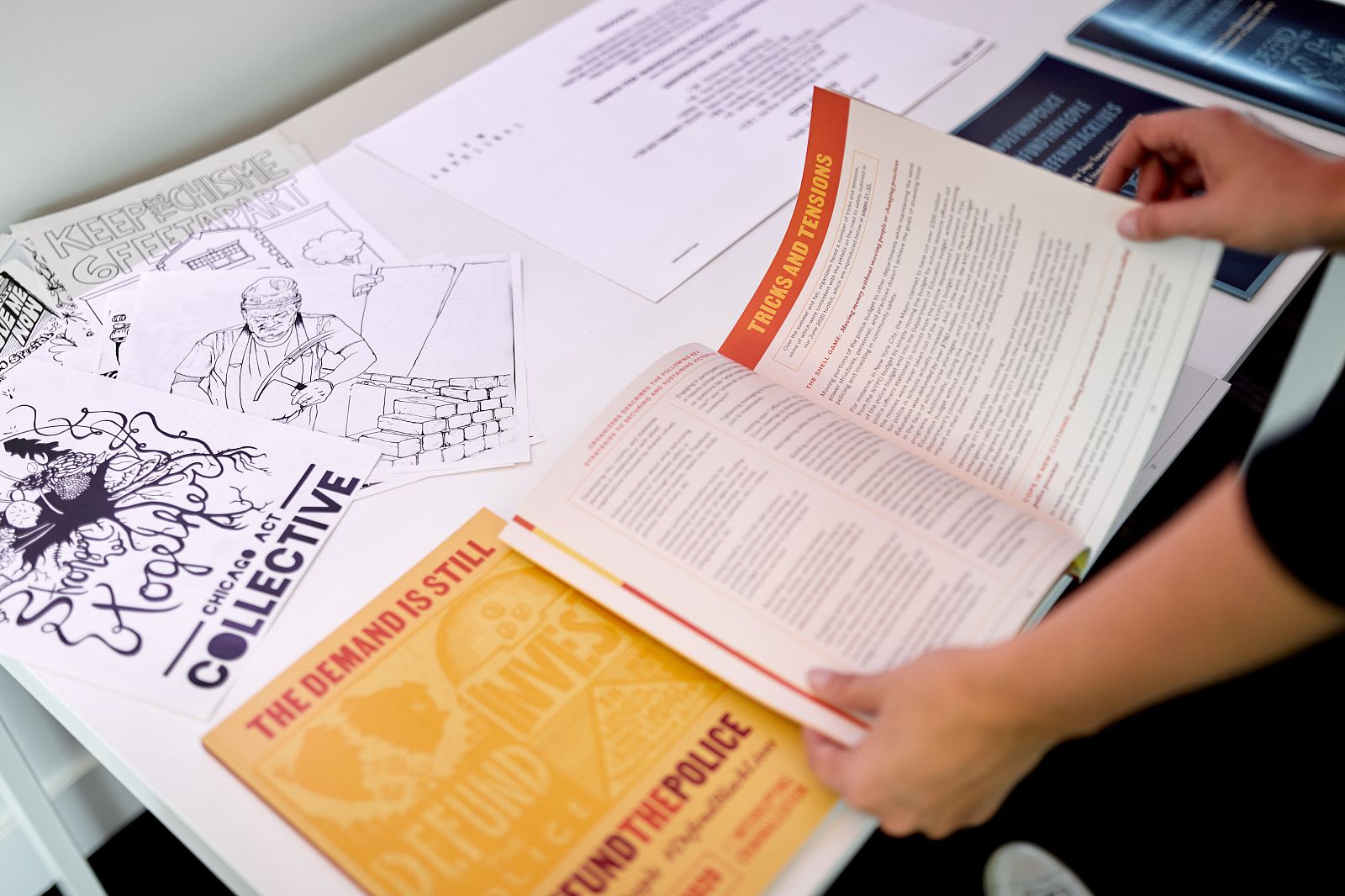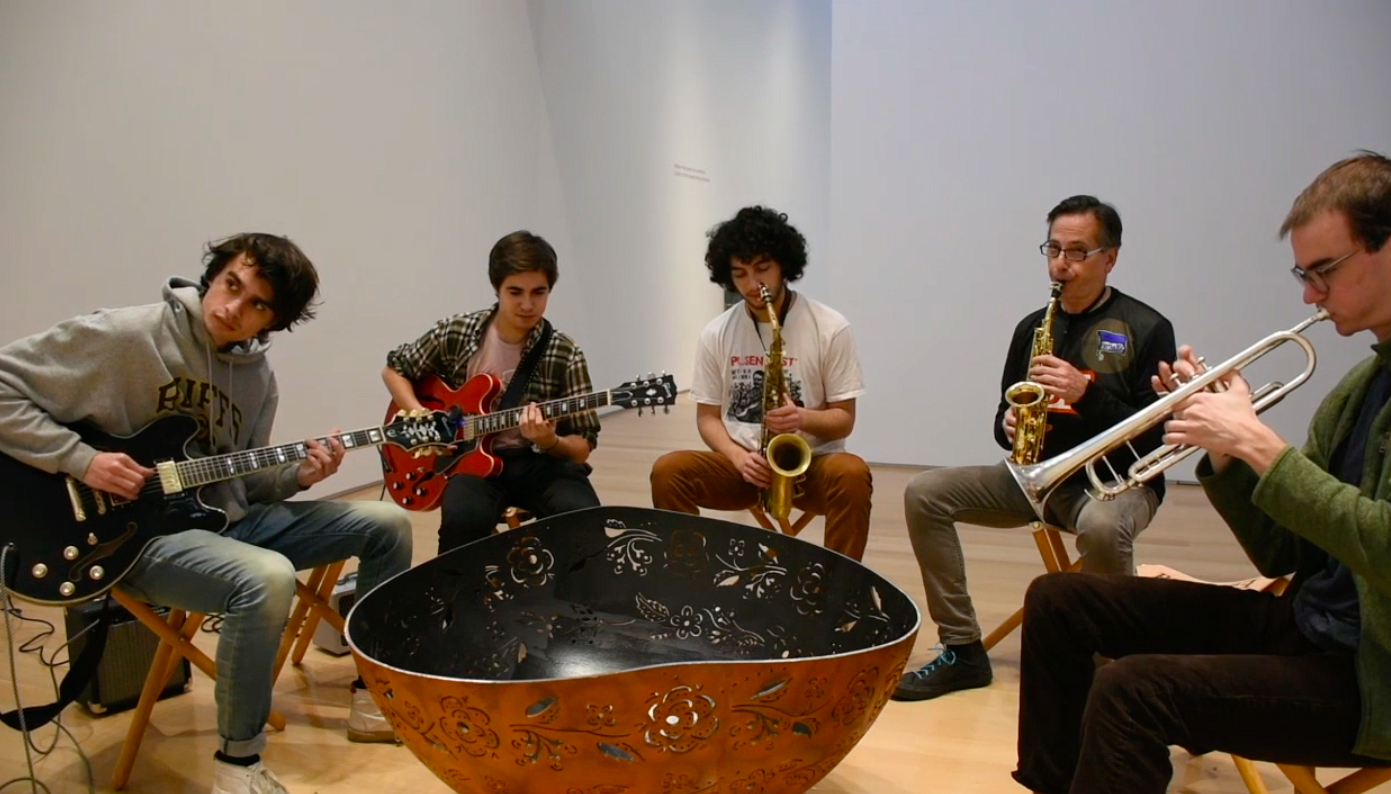Curator Michal Novotny developed this proposal during the Summer 2011 Curatorial Intensive in New York.
Despite the opinion of many, the essence of a monochrome doesn’t lie in the one color scheme depicted, but rather in the fact that monochrome doesn’t represent anything. Or doesn’t directly represent anything. However by not directly representing anything, the monochrome automatically refers to something. Nothing leads to thinking of something by its nature. Our feeling that something is nothing grows directly from our belief that there should be something. Therefore, the exhibition Monocrome defines monochrome as a representation of something missing.
Following this conception, monochrome doesn’t have to be exclusively monochromatic, or even be of any color. Every monochrome exists in the sphere of the unseen. Its core aspect of missing is of the biggest importance, the negation of previously established form. An ideal example of such a negated form is its total removal. Monochrome par excellence can be Rauschenberg’s Erased DeKooning as much as 4’33” by John Cage.
The aim of this show is not to create, state, or underline any movement, style, or tendency in a traditional art historical way. As previously suggested, the essence of monochrome lies only in what is unseen and untold. It is the human mind that unconsciously fulfills the empty negated form and links it to something. This tendency is also related to our urge to categorize and to give order to things.
Borges described the Chinese encyclopedia, the Celestial Emporium of Benevolent Knowledge, in which it is written that animals are divided into “those that belong to the Emperor, embalmed ones, those that are trained, suckling pigs, mermaids, fabulous ones, stray dogs, those included in the present classification…” Nonsense this categorization might seem, but it points out the weakness of categorizations in general. Said by Wittgenstein – “the cow chews its food and then dungs the rose with it, so the rose has teeth in the mouth of a beast.”
Isn’t this all the essence of art? The belief of what we don’t see, but what we somehow feel? This exhibition doesn’t claim any truths. Its validity, as much as the validity of the works included, lies only in its poeticity.
Considered artworks:
The work of Berlin-based artist Timur Si-Qin is made of a simple still wall projection. The projected image in its original electronic form is solid black (rgb 100,100,100). Projected on the wall, we see it as light grey or almost white. Black is, as any other color, a reaction of a material to light. Since the projected image is made of light it cannot be fully black. The projector projects black as blind dots in contrast to the lighter ones. The fully black image therefore becomes white. Yet in reality it is also not white. We see it as white because of the darkness of the projection’s surroundings. The solid black rectangle of Timur Si-Qin is neither black nor white. Rather, it is a prerequisite of our perception, between black and white light.
Paris-based artist Eden Morfaux presents a series of nine almost kitschy landscape photos. Be they images of rocky mountains or eroded by years of the tide on the sea coast, each of the pictures looks as though someone cut a part out of it. It seems like the white background under the photo shines out of a square shaped hole in the landscape. Upon closer inspection we notice that the white square is in fact a part of the scenery itself. Morfaux placed a white painted canvas facing the camera in the photographed landscape. It is the viewer’s unconsciousness that connects the white color with the color of the background. The white square is not the background of the scenery—instead the landscape is the background to the white square. Morfaux, as much as Si-Qin, is exposing the reversibility of our visual sensitivity and the relationship between an object and its context. Simultaneously he reconsiders the perception of the artist’s act. The creative act consists of the creation of emptiness as well as of space.
Despite being titled Buddha, the work of Italian artist Mauro Vignand recalls the tradition of American Minimalism. Buddha is a small pure plank of ebony. Its name has more than just an aoristic meaning since the plank was once part of a sculpture of the Buddha purchased in a small shop in Milan. Vignando sectioned the original in six parts in order to extract a small wooden plank from its interior. The memory of the original form loses all visible appearance, yet only at a certain level. The Buddha whom we imagine sitting in the typical seated position was previously just a wooden plank. The act of destruction in this work is the act of returning to the beginning, into the endless circle of birth and rebirth. This strong gesture of trying to get to the essence of things by uncovering also carries the metaphor of the position of the sculptor and the artist in society in general.
Presented as a screen with white noise and a connected mouse, the work of Dutch artist Jochem van der Spek appears to have a problem at first glance. The work requires participation. When the visitor moves the mouse, a rectangle of white noise appears out of the otherwise non-distinguished surface. The rectangle disappears once the mouse is still. In actuality the rectangle is always there, yet our eyes can only see its borders when it is moved. Van der Spek highlights that emptiness is not always as empty as we perceive it. He also recalls a topic essential to his work overall: movement is a condition of life.
French artist Didier Courbot places poetic descriptions such as Mediterranean harbor with colourful ships and sunset under empty spaces on photo album sheets. The spaces once held photographs, yet their presence is marked only by corner leveling lines. In this simple gesture he creates a theme about the essence of the photo album itself. It is not about what is actually seen but instead about the memories recalled in the viewer’s mind. The visitor fills the empty sheets with their own associations.
Vincent Ganivet’s mirror is a flattened disco ball. He removed the small pieces of mirror from the ball and adhered them to carton board. Despite this violent flattening, each of the mirrors kept its individuality and each reflects light from a slightly different angle. While we may not recognize ourselves in the reflection, the artist suggests that this multi-faceted image of ourselves is likely the closest to how we actually appear.
The work of Sandra Aubry and Sebastien Bourg consists of a simple kitchen clock that has been modified so that it has no hands. The clock hangs on the wall and stubbornly asks for our attention. As time passes, the viewer can hear the clock ticking, despite the lack of the dial, thus exposing our need to understand, control, and categorize our lives.
Amande’s key, made of white gold and marble, has a flat edge—a detail that slips by most viewers upon first glance. The key can potentially open any door, however because it is uncut, practically none.
American-born, Berlin-based artist Lindsay Lawson’s paper postcard lacks an image. Instead the postcard has two sides with printed lines for addresses and fields for stamps and short messages. This postcard conceivably has neither an origin nor destination and can be sent to conflicting addresses. Chance decides to whom it will finally be delivered.
Learn More
To learn more about this proposal please email Michal Novotny at michailnovotny@gmail.com. To learn more about the Curatorial Intensive email info@curatorsintl.org.






